By Spy Uganda
Many modern histories tend to focus on ancient kingdoms and empires around the Mediterranean and in the Fertile Crescent. But Western versions of history tend to overlook the many significant kingdoms in Africa. Here are seven of the most notable African kingdoms and empires, who had complex cities, trade routes, riches and cultures.

1. The Mali Empire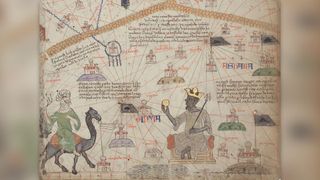
The Mali Empire ruled much of West Africa starting in 1235, when a confederation of kingdoms overthrew the region’s Sosso Empire. At its height in the 14th century, the Mali Empire ruled over 400 cities in modern Senegal, Gambia, Guinea, Guinea-Bissau, Ivory Coast, northern Ghana, southern Mauritania, Mali, northern Burkina Faso and western Niger; only the Mongol Empire and the Inca Empire were larger at that time.

“I think the fact that such a large and powerful polity has been left out of history books for so long is rather shameful,” Sirio Canós-Donnay, an archaeologist at the Spanish National Research Council (CSIC), told Live Science.

Such a vast empire seems to have been ruled as a confederation of territories, each with a different relationship to the empire. Some were practically independent, but others were ruled by appointed governors, she said.

The Mali Empire controlled the region’s gold, and its ruler, Mansa Musa, has been called the world’s richest man. “This is based on the trip to Cairo [in 1324, during his pilgrimage to Mecca] where he brought so much gold, he devalued the price of gold for almost two decades,” Canós-Donnay said.
But the empire withered after the 15th century as its control of the gold trade declined.
2. The Kingdom of Aksum

Although little-known today, the Kingdom of Aksum was one of the most powerful kingdoms in the ancient world.
Located beside the Red Sea in what are now northern Ethiopia, Eritrea and Yemen, the Kingdom of Aksum was a hub for ivory, gold, spices and textiles from the first century B.C. to the ninth century and traded with the Roman Empire.
But its origins may be much older, dating to the Pre-Aksumite period as far back as 1600 B.C., Michael Harrower, an associate professor of archaeology at Johns Hopkins University, told Live Science; the Aksumite period may only have been a change of the kingdom’s capital, from Yeha to Aksum.
The Aksumites developed their own system of writing and body of literature, and in the fourth century, Aksum became the first kingdom in Africa to convert to Christianity. Just why it did so isn’t certain, Harrower said, but the traditional story is that the Aksumite king Ezana was converted by a Greek-speaking youth from Tyre named Frumentius, who had been shipwrecked on the coast.
After the seventh century, the Arab caliphates controlled the Red Sea and the Aksumite Kingdom declined, but later kingdoms continued their tradition of Christianity.
3. The Kingdom of Kush
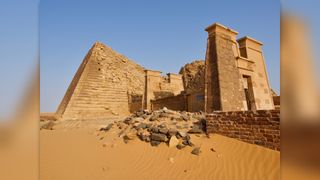
The Kingdom of Kush was located on the Nile in a region called Nubia, in what are now northern Sudan and southern Egypt.
The region was ruled by Egypt until about 1070 B.C., when the Kushites established an independent kingdom. From circa 712 to 664 B.C. they ruled over their former rulers as Egypt’s 25th dynasty, also known as the Nubian dynasty, which lasted until the Assyrians installed a puppet regime in Egypt.
Like many ancient Egyptians, the Kushites worshipped Amun as the supreme god and buried their esteemed dead in pyramid tombs. But they had a distinctly different language, ethnicity and culture, including their own system of writing.
The Kingdom of Kush developed from the Kerma culture, which had occupied Nubia from about 2500 B.C. After their defeat in Egypt, the Kushite capital was Meroë, the ruins of which can now be seen about 120 miles (200 kilometers) northeast of Khartoum in what is now Sudan.
In the fourth century, the kingdom began to decline amid a drying climate, and eventually, the Kushites were displaced by the region’s Noba people. It finally came to an end around 330, when Meroë was sacked by the neighboring Aksumites.
4. The Kingdom of Zimbabwe
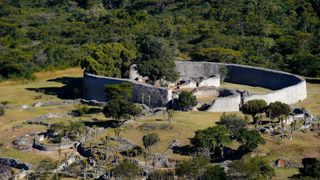
The Kingdom of Zimbabwe was founded by the Shona people of central southern Africa in about 1200 and lasted until about 1600. For a long time, little was known about the kingdom except the ruins at Great Zimbabwe, located about 165 miles (265 km) south of Harare, the capital of modern Zimbabwe.
The massive abandoned city, made from stones without mortar, is the largest stone structure in precolonial southern Africa; it covers several square miles and was home to up to 18,000 people.
Most of it is still unexcavated, but recent research has determined that the city’s builders overcame an extreme shortage of water by storing it in pits called dhakas.
“Springs and rainwater fed an urban population of ruling elites, religious leaders, craftsmen and merchants,” Innocent Pikirayi, a professor of archaeology and head of the Department of Anthropology and Archaeology at the University of Pretoria in South Africa, said in a statement.
The sophisticated irrigation system allowed the cultivation of crops, and Great Zimbabwe traded gold, copper and ivory between other parts of Africa and the Middle East.
Historians think Great Zimbabwe flourished until it was eclipsed in the 15th century by the rising kingdom of Mutapa, based north of Harare.
5. The kingdom of the Garamantes
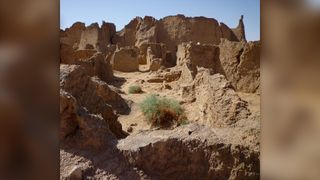
The kingdom of the Garamantes thrived in the Fezzan region of what’s now southwestern Libya after about 400 B.C.
Historians once thought it was a minor kingdom, but decades of research have revealed it consisted of several large cities fed by a unique irrigation system that transported water in underground tunnels from nearby ancient aquifers in the desert sandstone, which had formed millions of years earlier.
These tunnels — or “foggaras,” as they were called — allowed the Garamantes to cultivate crops and maintain their kingdom in the heart of the Sahara, trading mostly in gold, ivory and slaves from the South.
The Garamantes were also a powerful military force, with a well-trained army equipped with chariots, horses and camels that the Garamantes used to expand their territory and protect their trade routes.
Eventually, the aquifers’ water level fell too low to feed the foggaras, however, and the kingdom of the Garamantes began to decline in the second century B.C. After the first century A.D., the Garamantes were dominated by the settlements of the emerging Roman Empire along North Africa’s coast, but some Garamantian cities in the Fezzan remained occupied until at least the 11th century.
6. The Kingdom of Benin
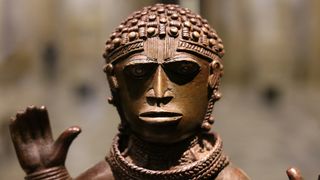
The Kingdom of Benin was located in what’s now southern Nigeria from about the 12th to 19th centuries. It is also known as the Edo Kingdom, from the name of its capital city and the ethnic group that founded it. However, it has nothing to do with the modern republic of Benin, which, after a 1975 coup, took its name from the nearby coastal region known as the Bight of Benin.
The Kingdom of Benin was a major center of learning and trade, but in the 17th century, it also became a major source of slaves for the colonization of the Americas. From the 15th century, however, Benin was famous for its “bronze” sculptures, which were made from metal rings called manillas imported by the Portuguese. The sculptures often portrayed eminent people in a unique style, and thousands were stolen and exported around the world after the kingdom was conquered by Britain in 1897.
The region then became part of colonial Nigeria and then part of independent Nigeria in 1960; Nigeria has called for the “Benin bronzes” to be returned to the country.
7. The Zulu Kingdom
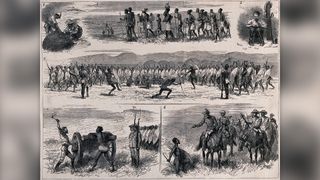
The Zulu Kingdom developed from the Zulu ethnic group in southern Africa with the ascent of a man named Shaka in the late 18th century, and it still survives today as part of modern South Africa.
According to James Gump, a professor emeritus of history at the University of San Diego and the author of The Dust Rose Like Smoke: The Subjugation of the Zulu and the Sioux (Nebraska Press, 1994), Shaka was the illegitimate son of a chief of the Zulu people who was exiled to live among the powerful Mthethwa clan.
As a military leader, he introduced the short stabbing spear and the “winged” battle formation, and he later became the ruler of the Mthethwa. Eventually, his strength grew, and by the early 19th century, he led 40,000 warriors and dominated the peoples of the region, including the Zulus.
Shaka’s military developments were successfully used by his successors against the British in the Battle of Isandlwana in January 1879 and the Battle of Rorke’s Drift a day later, which was depicted in the 1964 movie “Zulu.” By the end of that year, however, Britain had won the war, and thereafter, the Zulu suffered partition, civil war and repression, Gump told Live Science in an email. They also suffered egregiously in the 20th century from segregation and apartheid, which led to ethnic violence in the 1980s and 1990s.
But in the 21st century, the Zulu have emerged as a key part of modern South Africa, where they make up almost a quarter of the population.








I loved your blog post.Thanks Again. Want more.
Thank you ever so for you article post.Much thanks again. Awesome.
Thank you for your blog.Thanks Again. Great.
Thanks again for the article.Thanks Again. Awesome.
Looking forward to reading more. Great blog post.Really thank you! Really Great.
Muchos Gracias for your article.Really thank you! Awesome.
Appreciate you sharing, great blog post. Really Cool.
I think this is a real great blog.Really looking forward to read more.
I truly appreciate this article.Really looking forward to read more. Fantastic.
You could definitely see your enthusiasm in the work you write.The world hopes for more passionate writers like you who aren’tafraid to mention how they believe. Always follow your heart.
Amazing many of wonderful advice.mba essay writing service argumentative essay topics legit essay writing services
Tremendous things here. I am very glad tosee your post. Thanks so much and I’m having alook ahead to contact you. Will you please drop me a mail?Review my blog post :: 1 ace333
i need someone to write my research paper help me write my research paper help on writing a research paper
Thank you very much for helping me. I love sucking dick btw hmu